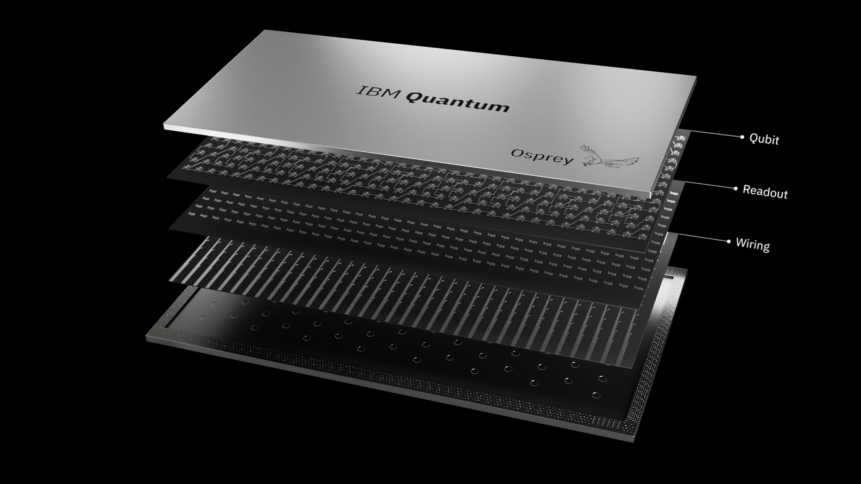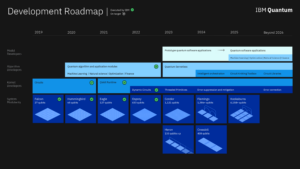IBM just unveiled its most powerful quantum computer yet — a 433-qubit machine

- IBM intends to scale up its quantum computer to over 4,000 qubits by 2025 and beyond.
In 2021, International Business Machines Corp (more commonly known as IBM), broke the 100-qubit barrier with its 127-qubit Eagle quantum computer, just two years after the debut of its 27-qubit Falcon chip. Ultimately, IBM wants to scale up its quantum computers to over 4,000 qubits by 2025 — and it’s on track to achieve that. This week, IBM announced the launch of its Osprey quantum processor, which features 433 qubits, reflecting its slow but steady march towards its quantum computing goals.
IBM’s quantum roadmap essentially consists of two additional stages — the 1,121-qubit Condor and 1,386-qubit Flamingo processors in 2023 and 2024, respectively — before it plans to hit the 4,000-qubit stage with its Kookaburra processor in 2025. “These processors push the limits of what can be done with single chip processors and controlling large systems,” IBM said in its quantum roadmap.

Our new 2022 Development Roadmap
Source: IBM
So far, the company has generally been able to make this roadmap work, but the number of qubits in a quantum computer is obviously only one part of a very large and complex puzzle, with longer coherence times and reduced noise being just as important. IBM’s senior VP and director of research Darío Gi claims the new 433 qubit ‘Osprey’ processor brings the company a step closer to the point where a quantum computer will be used to tackle previously unsolvable problems.
“We are continuously scaling up and advancing our quantum technology across hardware, software and classical integration to meet the biggest challenges of our time, in conjunction with our partners and clients worldwide. This work will prove foundational for the coming era of quantum-centric supercomputing,” he explained.
IBM’s new 433-quantum bit (qubit) processor has the potential to run complex quantum computations well beyond the capability of any classical computer. For reference, IBM said the number of classical bits that would be necessary to represent possible states on the IBM Osprey processor far exceeds the total number of atoms in the known universe.
IBM has also released a beta update to Qiskit Runtime, which now includes allowing a user to trade speed for reduced error count with a simple option in the API. “By abstracting the complexities of these features into the software layer, it will make it easier for users to incorporate quantum computing into their workflows and speed up the development of quantum applications,” the statement reads.
IBM also detailed its Quantum System Two yesterday — basically, IBM’s quantum mainframe — that will be able to house multiple quantum processors and integrate them into a single system with high-speed communication links. The idea is to launch this system by the end of 2023, when it will be a building block of quantum-centric supercomputing.
Quantum computers and the issue of scaling
For IBM, going beyond single chip processors is the key to solving scale. In 2023, the company plans to introduce classical parallelized quantum computing with multiple Heron processors connected by a single control system. “In 2024, we will debut Crossbill, the first single processor made from multiple chips. The same year will also unveil our Flamingo processor. This remarkable processor will be able to incorporate quantum communication links, allowing us to demonstrate a quantum system comprising three Flamingo processors totaling 1,386 qubits,” it said.
By 2025, IBM will combine multi-chip processors and quantum communication technologies to create its Kookaburra processor. “This will demonstrate a quantum system of three Kookaburra processors, totaling 4,158-qubits. This leap forward will usher in a new era of scaling, providing a clear path to 100,000 qubits and beyond,” it added.










